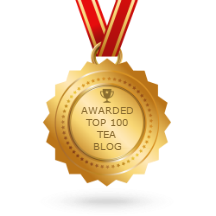If you believe, like so many of us do, that even the best teas are meant to be consumed and enjoyed, then you might find it a bit odd that there are people who view tea more as an investment strategy. It’s an offbeat notion that garners a smattering of press attention every now and then.
 One of the most recent articles on this topic appeared in London’s Telegraph. It reported on a so-called “tea bubble” in China that came when investors rushed to buy Dahongpao tea, which is grown in the eastern Chinese province of Fujian. As a result, prices have increased more than 10 times over, with a kilogram of this tea now selling for the equivalent of about 1,576 US dollars.
One of the most recent articles on this topic appeared in London’s Telegraph. It reported on a so-called “tea bubble” in China that came when investors rushed to buy Dahongpao tea, which is grown in the eastern Chinese province of Fujian. As a result, prices have increased more than 10 times over, with a kilogram of this tea now selling for the equivalent of about 1,576 US dollars.
The article also pointed out that this is not an unusual occurrence in China, where overeager investors frequently rush to fling their money into one commodity or another, including wine, artwork and stamps. Frenzied investing in tea is nothing new either, with one of the previous outbursts taking place in 2008, when the puerh tea produced in China’s Yunnan province sparked yet another bubble.
While avid tea drinkers might cringe at the notion of investors driving up the prices of tea to such ridiculous levels, it’s also worth noting that what might at first seem to be an outrageous price doesn’t seem quite so bad when you do the math. While a cup of tea at the above mentioned price point is still a bit…steep, at about $3.50 per cup, it’s not that much more than you might pay for a cup of okay tea at a certain big name chain of cafes.
For teas that are not quite as pricey but which still might be perceived as being on the expensive side it’s also important to do the math. For instance, one popular online tea merchant offers a high grade of Japanese sencha (green tea) at more than $35 for 50 grams. Which might seem like a lot of money until you consider that 50 grams is enough for about 22 cups of tea and thus works out to $1.65 per cup. Keeping in mind that a high grade of sencha will often produce at least 2-3 cups of very drinkable tea then this price doesn’t seem nearly so high.
Don’t miss William’s blog, Tea Guy Speaks!
[Editor’s note: Our blog is chock full of great articles on this topic. Use our search feature to find them!]
© Online Stores, Inc., and The English Tea Store Blog, 2009-2014. Unauthorized use and/or duplication of this material without express and written permission from this article’s author and/or the blog’s owner is strictly prohibited. Excerpts and links may be used, provided that full and clear credit is given to Online Stores, Inc., and The English Tea Store Blog with appropriate and specific direction to the original content.



Leave a comment